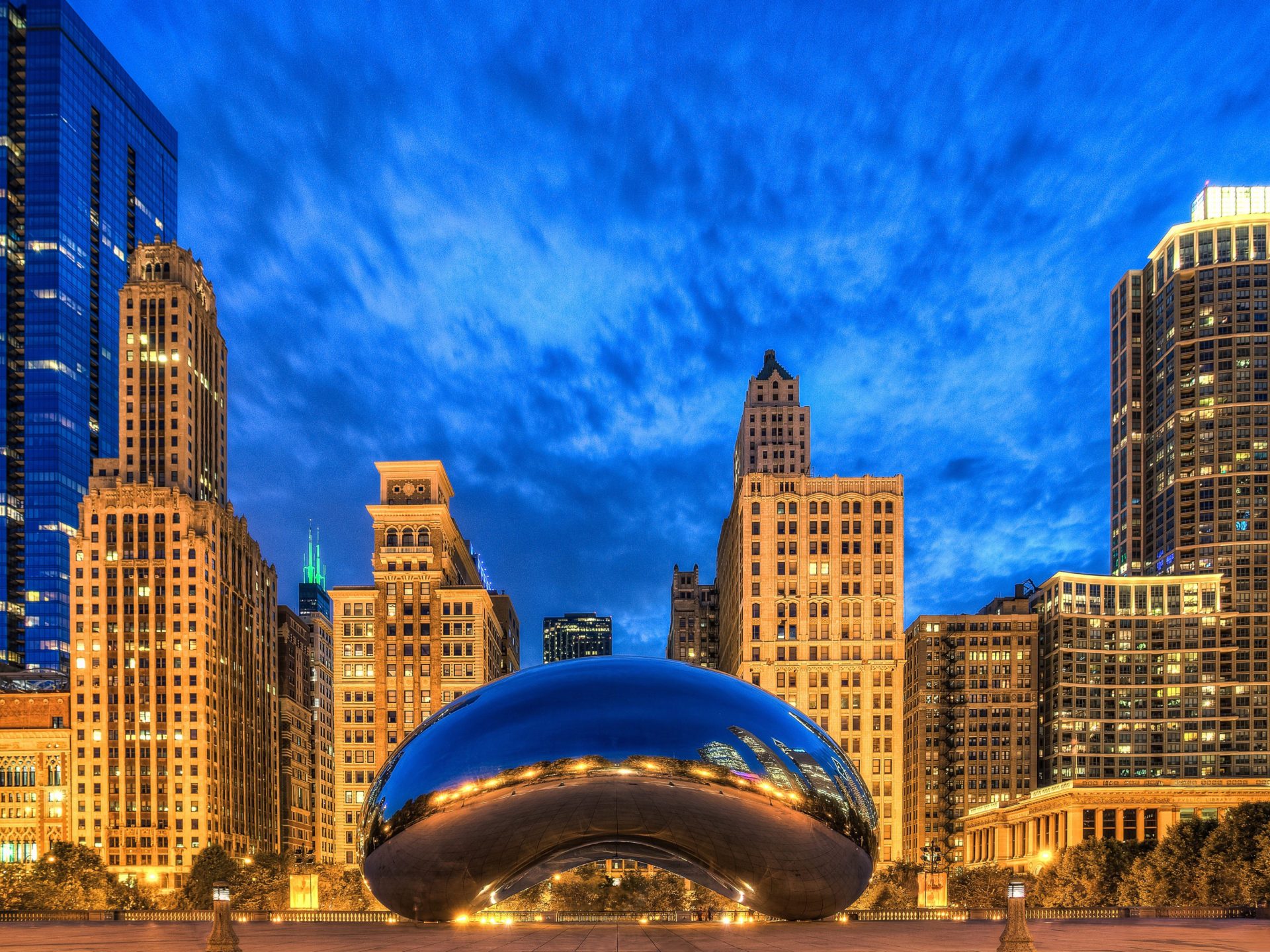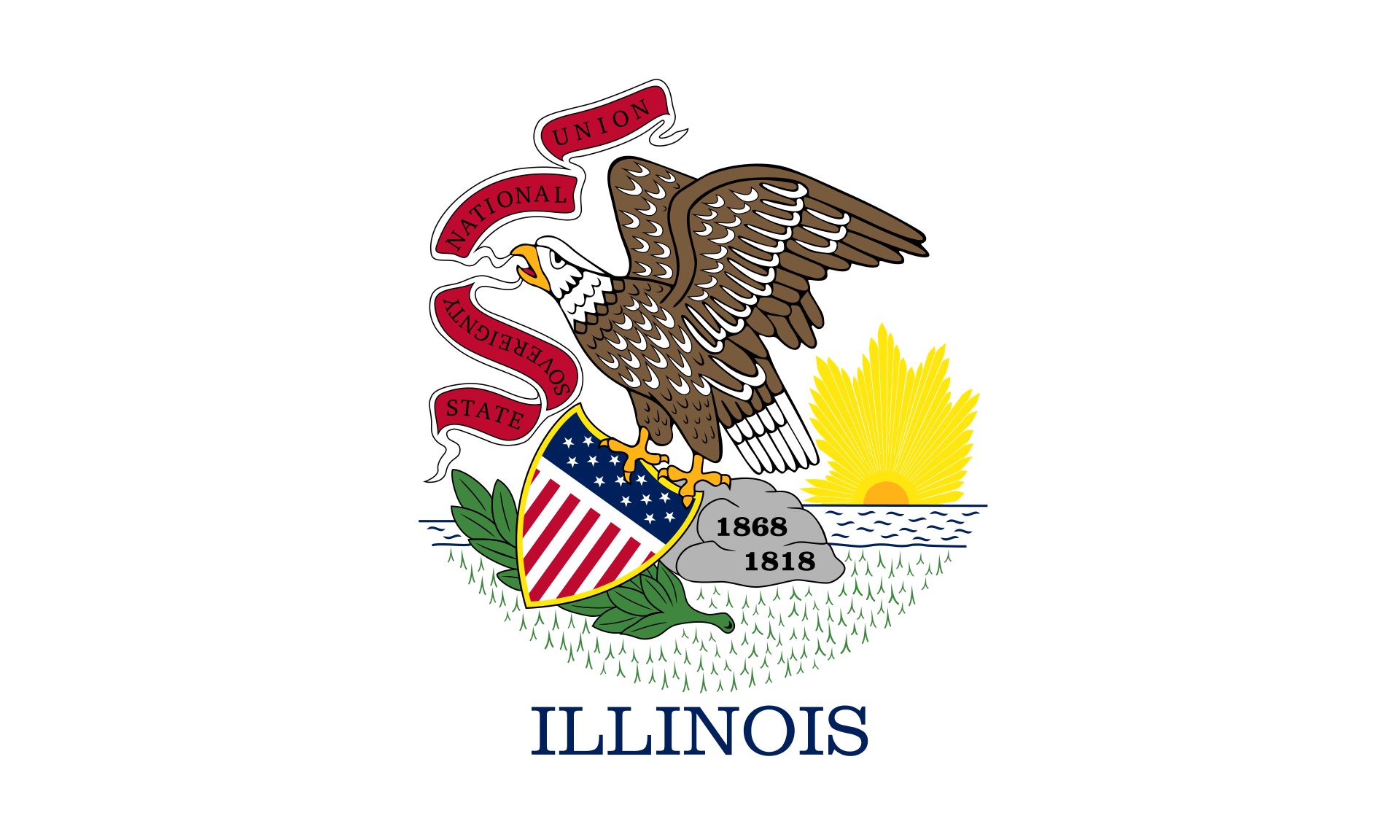
Cloud Gate is a public sculpture by Indian-born British artist Anish Kapoor, that is the centerpiece of AT&T Plaza at Millennium Park in the Loop community area of Chicago, Illinois. The sculpture and AT&T Plaza are located on top of Park Grill, between the Chase Promenade and McCormick Tribune Plaza & Ice Rink. Constructed between 2004 and 2006, the sculpture is nicknamed "The Bean" because of its shape, a name Kapoor initially disliked, but later grew fond of. Made up of 168 stainless steel plates welded together, its highly polished exterior has no visible seams. It measures 33 by 66 by 42 feet (10 by 20 by 13 m), and weighs 110 short tons (100 t; 98 long tons).
Kapoor's design was inspired by liquid mercury and the sculpture's surface reflects and distorts the city's skyline. Visitors are able to walk around and under Cloud Gate's 12-foot (3.7 m) high arch. On the underside is the "omphalos" (Greek for "navel"), a concave chamber that warps and multiplies reflections. The sculpture builds upon many of Kapoor's artistic themes, and it is popular with tourists as a photo-taking opportunity for its unique reflective properties.
The sculpture was the result of a design competition. After Kapoor's design was chosen, numerous technological concerns regarding the design's construction and assembly arose, in addition to concerns regarding the sculpture's upkeep and maintenance. Various experts were consulted, some of whom believed the design could not be implemented. Eventually, a feasible method was found, but the sculpture's construction fell behind schedule. It was unveiled in an incomplete form during the Millennium Park grand opening celebration in 2004, before being concealed again while it was completed. Cloud Gate was formally dedicated on May 15, 2006, and has since gained considerable popularity, both domestically and internationally.
Lying between Lake Michigan to the east and the Loop to the west, Grant Park has been Chicago's front yard since the mid-19th century. Its northwest corner, north of Monroe Street and the Art Institute, east of Michigan Avenue, south of Randolph Street, and west of Columbus Drive, had been Illinois Central rail yards and parking lots until 1997, when it was made available for development by the city as Millennium Park.[1] For 2007, the park was Chicago's second largest tourist attraction, trailing only Navy Pier.[2]
In 1999, Millennium Park officials and a group of art collectors, curators and architects reviewed the artistic works of 30 different artists and asked two for proposals. American artist Jeff Koons submitted a proposal to erect a permanent 150-foot (46 m) sculpture of a playground slide;[3][4] his glass and steel design featured an observation deck 90 feet (27 m) above the ground that was accessible via an elevator.[5] The committee chose the second design by internationally acclaimed artist Anish Kapoor. Measuring 33 by 66 by 42 feet (10 by 20 by 13 m) and weighing 110 short tons (100 t; 98 long tons), the proposal featured a seamless, stainless steel surface inspired by liquid mercury.[6] This mirror-like surface would reflect the Chicago skyline, but its elliptical shape would distort and twist the reflected image.[7] As visitors walk
In the underside of the sculpture is the omphalos, an indentation whose mirrored surface provides multiple reflections of any subject situated beneath it.[8] The apex of the omphalos is 27 feet (8.2 m) above the ground. The concave underside allows visitors to walk underneath to see the omphalos, and through its arch to the other side so that they view the entire structure.[9] During the grand opening week in July 2004, press reports described the omphalos as the "spoon-like underbelly".[10][11] The stainless steel sculpture was originally envisioned as the centerpiece of the Lurie Garden at the southeast corner of the park. However, Park officials believed the piece was too large for the Lurie Garden and decided to locate it at AT&T Plaza, despite Kapoor's objections.[12] Skyscrapers to the north along East Randolph Street, including The Heritage, the Smurfit-Stone Building, Two Prudential Plaza, One Prudential Plaza, and Aon Center are visible, reflected on both the east and west sides of the sculpture. around the structure, its surface acts like a fun-house mirror as it distorts their reflections.[13]
Although Kapoor does not draw with computers, computer modeling was essential to the process of analyzing the complex form,[14] which created numerous issues. Since the sculpture was expected to be outdoors, concerns arose that it might retain and conduct heat in a way that would make it too hot to touch during the summer and so cold that one's tongue might stick to it during the winter. The extreme temperature variation between seasons was also feared to weaken the structure. Graffiti, bird droppings and fingerprints were also potential problems, as they would affect the aesthetics of the surface.[4][15] The most pressing issue was the need to create a single seamless exterior for the external shell, a feat architect Norman Foster once believed to be nearly impossible.[15]
While the sculpture was being constructed, public and media outlets nicknamed it "The Bean" because of its shape, a name that Kapoor described as "completely stupid".[12] Months later, Kapoor officially named the piece Cloud Gate.[16] (Kapoor eventually accepted the nickname of "The Bean".[17]) Critical reviews describe the sculpture as a passage between realms.[18] Three-quarters of the sculpture's external surface reflects the sky and the name refers to it acting as a type of gate that helps bridge the space between the sky and the viewer.[19] The sculpture and plaza are sometimes referred to jointly as "Cloud Gate on the AT&T Plaza".[20] It is Kapoor's first public outdoor work in the United States,[20] and is the work by which he is best known in the country according to the Financial Times.




 Architecture
Architecture
 Illinois-IL
Illinois-IL




